 Home
Home
 Home Home |
Home • Using VC++ at Home | Home |
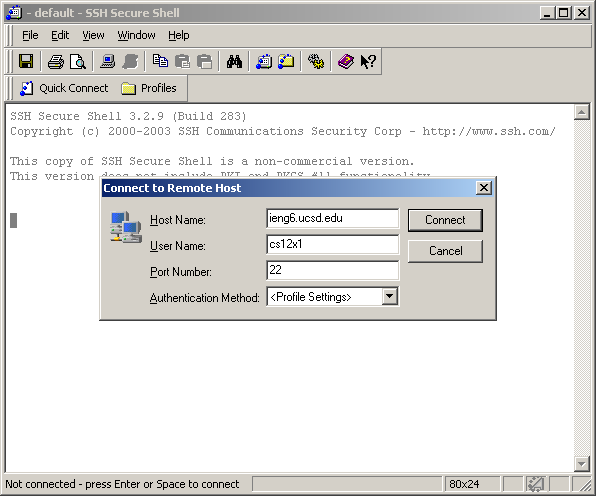 First you need to acquire the assignment from the public area and copy it to your home directory. Launch SSH Secure Shell and click on Quick Connect. In the new window, type in ieng6.ucsd.edu in the Host Name textfield, your cs12x login in the User Name textfield, and click then Connect.
First you need to acquire the assignment from the public area and copy it to your home directory. Launch SSH Secure Shell and click on Quick Connect. In the new window, type in ieng6.ucsd.edu in the Host Name textfield, your cs12x login in the User Name textfield, and click then Connect.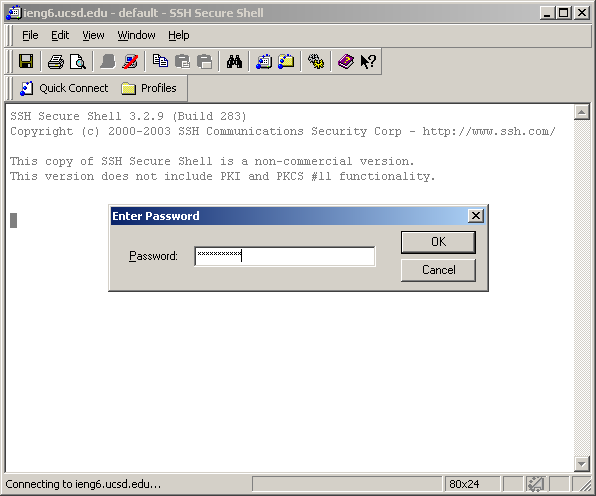 Type in your cs12x login as provided to you on the first day of class. If you don't know your cs12x login, it can also be found by using the ACS account lookup tool. Your password is the same as your personal ACS account password.
Type in your cs12x login as provided to you on the first day of class. If you don't know your cs12x login, it can also be found by using the ACS account lookup tool. Your password is the same as your personal ACS account password.If this is your first time logging in to ieng6, you will be prompted about private keys. Click Yes.
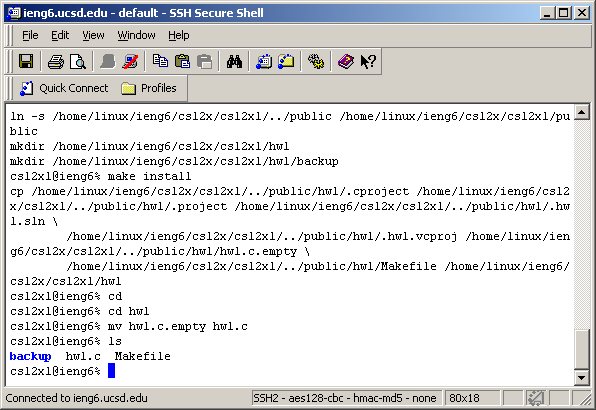 You should see a lengthy welcome message (press 'q' to skip). At the prompt, type the following:
You should see a lengthy welcome message (press 'q' to skip). At the prompt, type the following:
You have now acquired the assignment from the public area and copied it to your home directory.
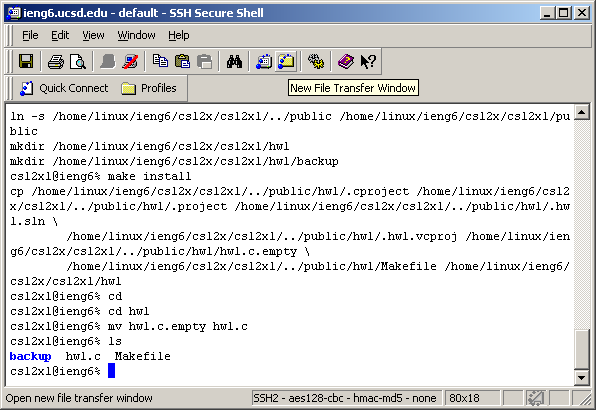 Before you can work on your assignment in VC++, you have to copy it to your computer. Launch a New File Transfer Window. by clicking on the icon shown on the right.
Before you can work on your assignment in VC++, you have to copy it to your computer. Launch a New File Transfer Window. by clicking on the icon shown on the right. You should see a folder named hw1 on the right. On the left, navigate to the folder where you want to store your homework assignments. Drag the hw1 folder from the right pane to the left pane.
You should see a folder named hw1 on the right. On the left, navigate to the folder where you want to store your homework assignments. Drag the hw1 folder from the right pane to the left pane.
Tip: The file transfer window also lets you drag directly to and from Explorer windows.
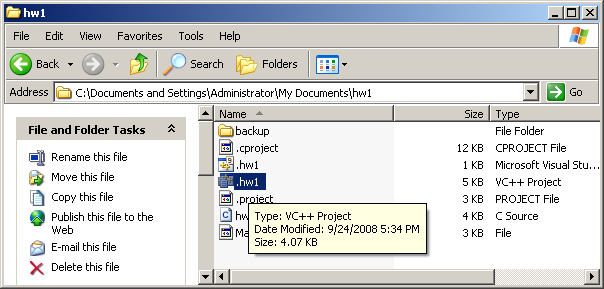 Navigate to the folder where you transfered hw0 and double-click the .vcproj file.
Navigate to the folder where you transfered hw0 and double-click the .vcproj file. The project should open in VC++. You can compile your project by pressing F7 and you can run it by pressing Ctrl + F5.
The project should open in VC++. You can compile your project by pressing F7 and you can run it by pressing Ctrl + F5.
Use the Solution Explorer (left) to browse files in the project. Double-clicking on a file in the solution explorer will open it for editing.
Use the Configuration selector (top) to switch between different project configurations. This be useful in later assignments when you need to switch between calc and driver.
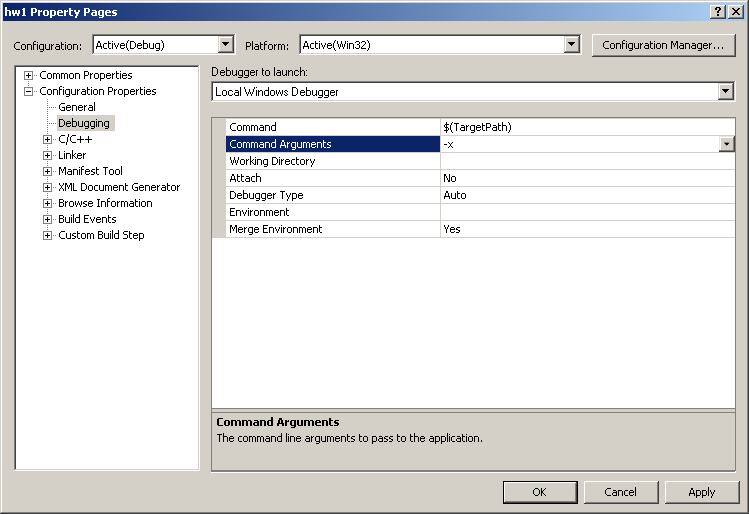 To pass command line arguments to your program, go to Project -> Properties. On the left, expand Configuration Properties -> Debugging and type your command line arguments in the Command Arguments textfield and click Ok.
To pass command line arguments to your program, go to Project -> Properties. On the left, expand Configuration Properties -> Debugging and type your command line arguments in the Command Arguments textfield and click Ok.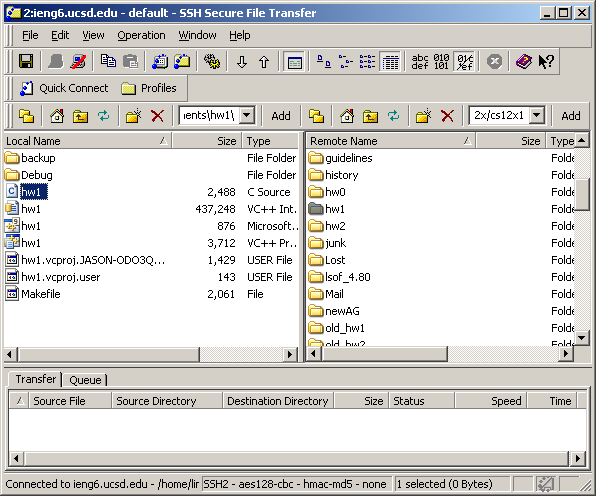 When you're done editing your files, upload them back to ieng6. Visual C++ generates a lot of files which it uses for configuration and intellisense. These files can get quite large, so only upload the .c and .h files you modified.
When you're done editing your files, upload them back to ieng6. Visual C++ generates a lot of files which it uses for configuration and intellisense. These files can get quite large, so only upload the .c and .h files you modified. Home Home |
Home • Using VC++ at Home | Home |